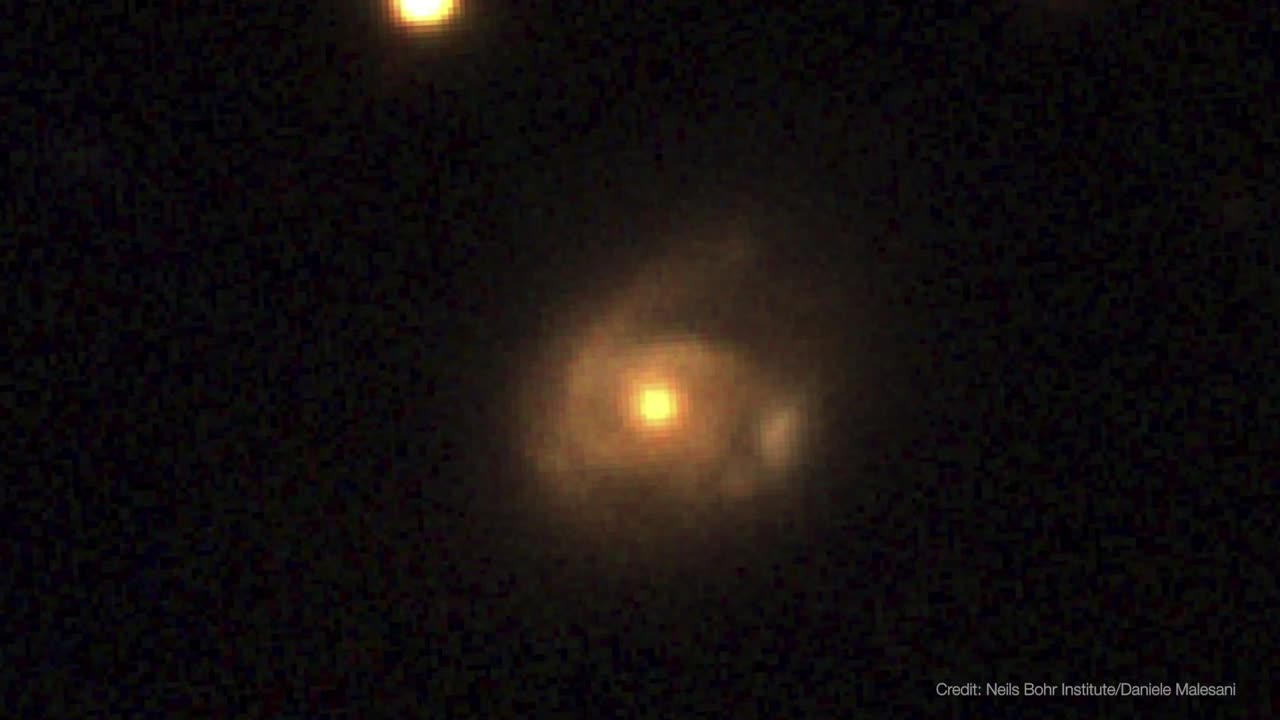Premium Only Content

Swift Spots a Snacking Black Hole Using a New Trick। NASA
Using NASA’s Neil Gehrels Swift Observatory, which launched in 2004, scientists have discovered a black hole in a distant galaxy repeatedly nibbling on a Sun-like star. The object heralds a new era of Swift science made possible by a novel method for analyzing data from the satellite’s X-ray Telescope (XRT).
When a star strays too close to a monster black hole, gravitational forces create intense tides that break the star apart into a stream of gas. The leading edge swings around the black hole, and the trailing edge escapes the system. These destructive episodes are called tidal disruption events. Astronomers see them as flares of multiwavelength light created when the debris collides with a disk of material already orbiting the black hole.
Recently, astronomers have been investigating variations on this phenomena, which they call partial or repeating tidal disruptions.
During these events, every time an orbiting star passes close to a black hole, the star bulges outward and sheds material, but survives. The process repeats until the star loses too much gas and finally breaks apart. The characteristics of the individual star and black hole system determine what kind of emission scientists observe, creating a wide array of behaviors to categorize.
On June 22, 2022, the XRT captured Swift J0230 for the first time. It lit up in a galaxy around 500 million light-years away in the northern constellation Triangulum. Swift’s XRT has observed nine additional outbursts from the same location roughly every few weeks.
Scientists propose that Swift J0230 is a repeating tidal disruption of a Sun-like star orbiting a black hole with over 200,000 times the Sun’s mass. They estimate the star loses around three Earth masses of material on each pass. This system provides a bridge between other types of suspected repeating disruptions and allowed scientists to model how interactions between different star types and black hole sizes affect what we observe.
Swift J0230’s discovery was possible thanks to a new, automated search of XRT observations called the Swift X-ray Transient Detector.
After the instrument observes a portion of the sky, the data is transmitted to the ground, and the program compares it to previous XRT snapshots of the same spot. If that portion of the X-ray sky has changed, scientists get an alert. In the case of Swift J0230, astronomers were able to rapidly coordinate additional observations of the region.
-
 LIVE
LIVE
The Quartering
4 hours agoCharlie Kirk Conspiracies Go TOO FAR, Youtube Re-Bans Everyone & Libs Dying From Tylenol
15,146 watching -
 LIVE
LIVE
TheSaltyCracker
56 minutes agoSaltCast 9-25-25
3,679 watching -
 LIVE
LIVE
Barry Cunningham
2 hours agoPRESIDENT TRUMP NEEDS TO STAND FIRM AND SHUT THE GOVERNMENT DOWN IF HE HAS TO!
1,741 watching -
 LIVE
LIVE
StoneMountain64
42 minutes agoBattlefield 6 News and Extraction Gaming
237 watching -
 LIVE
LIVE
Stephen Gardner
24 minutes agoCharlie Kirk Bombshell: Fresh Video Footage Shatters the Narrative!😱
999 watching -
 1:28:13
1:28:13
Russell Brand
3 hours agoThe Truth About UK Corruption – Andrew Bridgen Speaks Out - SF640
133K22 -
 2:11:52
2:11:52
Side Scrollers Podcast
3 hours agoYouTube ADMITS BLATANT Censorship + California Wants to FINE “Hate Speech” + More | Side Scrollers
31.3K -
 15:26
15:26
Simply Bitcoin
1 day ago $0.17 earned$60 Trillion Incoming? | Why Gold & Bonds are Screaming "BUY BITCOIN"
4243 -
 1:55:59
1:55:59
The Charlie Kirk Show
2 hours agoDebunking the Lies and Smears about Charlie | ThoughtCrime Team | 9.25.2025
82K41 -
 DVR
DVR
Sean Unpaved
2 hours agoCup Swings, Homer Kings, & TNF Zzzz's
16K2